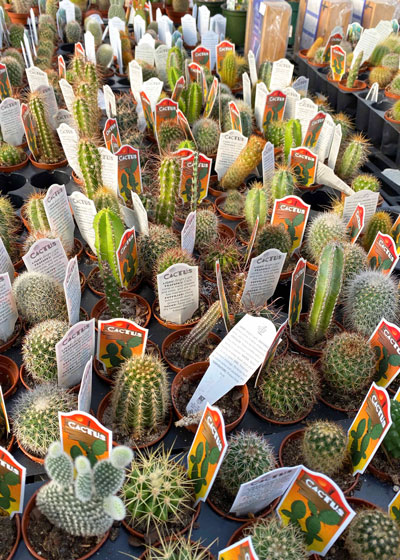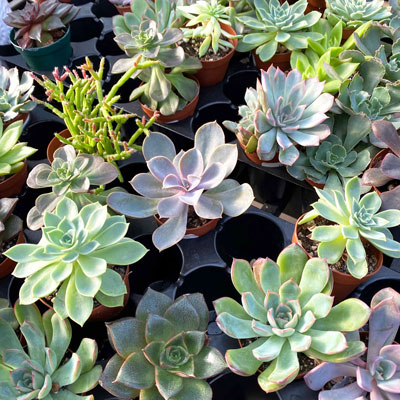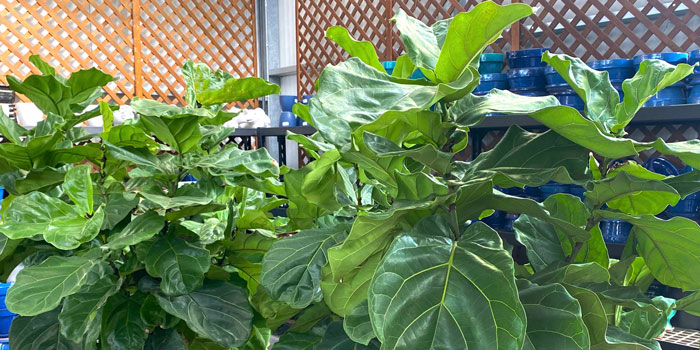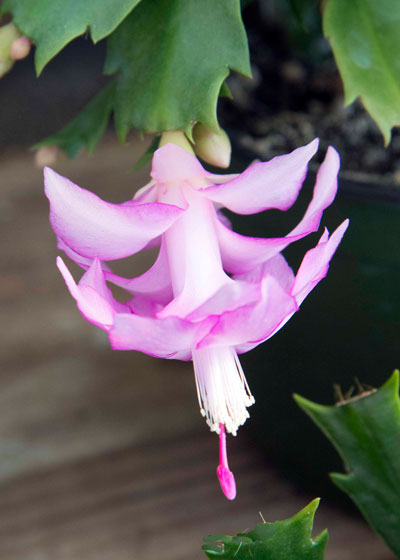A Few Fun Facts
I posed a few questions that gardeners ask in the hopes that you might enjoy reading their answers. I guess we’ll find out together.


What’s the difference between a “cactus” and a “succulent?”
A “succulent” is a plant that has evolved an ability to retain water in order to survive periods of extended drought.
Accurately speaking, a “cactus” is a member of the Cactus Family, Cactaceae. A plant taxonomist could run it through a plant ID key and he or she would find that it fits in that specific plant family.
Almost all members of the Cactus Family are succulents, but most plants that we call “succulents” are not members of the Cactus plant family. Succlents also include plants like aloes, crown of thorns, jade plant and hen-and-chicks, yuccas, agaves, starfish flowers (Stapelias) and hundreds of other plants from scores of other plant families.
Did you know that all members of the Cactus Family were native originally to the Western Hemisphere? Euphorbias such as crown-of-thorns and baseball cactus are native to the Eastern Hemisphere. Although they look very much like cacti, they are actually sisters to poinsettias.

What is a “strangling fig?”
Figs that we grow in our yards in warmer parts of Texas are in the genus Ficus. That ranks them as sisters to weeping fig (F. benjamina), fiddleleaf fig (F. pandurata), rubber plant (F. elastica) and Banyon tree (F. benghalensis).
Several of the tropical species of Ficus actually germinate high in the rain forest canopies. Their seeds catch hold and start growing in the crotches of tree limbs where debris has collected and seeds fall.
As those plants start to grow, their roots head toward the ground. In the hot, humid conditions they grow rapidly until they encircle the host tree’s trunk. Eventually, they strangle the tree, using it for support.

What makes a Christmas cactus bloom?
Most folks are aware that poinsettias require 14 hours of uninterrupted darkness each night if we expect them to bloom at Christmas. A flowering hormone is produced in the growing tips of the stems, and that hormone is destroyed by light during the dark period.
That same thing happens with Christmas cacti and kalanchoes. These are plants that cannot be exposed to room lights at night on a regular basis if we expect them to bloom properly. So, we cover them from 5 p.m. until 8 a.m., or we put them into a dark room and are careful not to go in and turn on the lights in the process.
In fairness to the situation, kalanchoes and Christmas cacti aren’t as sensitive to short interruptions of light as poinsettias, but you still need to be careful.
Why should you always have drain holes in your pots?
Remember what you’ve read elsewhere in e-gardens this time? The ideal soil mix is 50 percent solid matter and 50 percent pore space. Of that pore space, half is air and half is water.
When you water a plant from below, each pore must be filled with water before the one above it can fill. So the soil can quickly become waterlogged.
But that’s not the reason you must have drain holes in your pots. If that’s what you guessed, you’re like most other folks.
When you water from the top of the pot down, you re-dissolve all the accumulated mineral salts and you have the chance to leach the excess salts out of the soil. Irrigation water has minerals in it. And so do any plant foods that you add, whether they’re organic or inorganic. Unless you have drain holes, you have no way to get rid of the minerals.
That is the reason your pots should always have drain holes.
